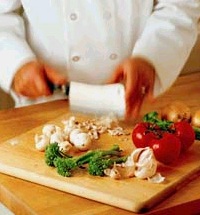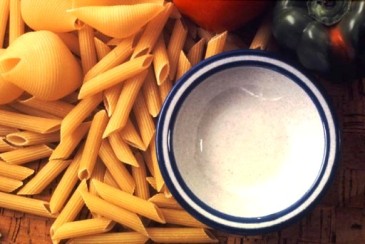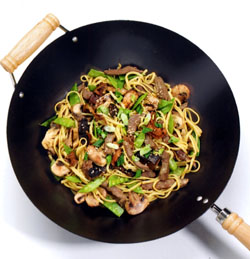Typically one uses a wok; a large deep bowl made of thin metal with gentle curved sides. The heat concentrates at the bottom of the pan and the curved sides allow you to push the ingredients to cooler areas. You can use a typical frying pan, but it won’t cook as fast thus keeping your vegetables as crisp as you would want. Other than a few specialty ingredients, you can use whatever you have on hand to make a stir-fry. It’s a great way to clean out the vegetable drawer. Because you’ll be cooking at very high heat, you want to use a high smoking point oil like peanut, safflower, corn, or canola. Some of the specialty ingredients that you should be able to find at your local supermarket are soy sauce, hoisin sauce, and chili sauce. Short or medium grained rice is best for accompanying your stir-fry.
You start by prepping the meat or chicken. Cut the meat into thin bite-size slices and marinate to protect it from overcooking. The marinade can be made with a variety of liquids depending on the flavor you are trying to obtain. Typical marinade ingredients include chicken or beef stock, soy sauce, hoisin sauce, chili sauce, corn starch, brown sugar, rice wine or dry sherry. Marinate for a least one hour, longer is better.
Prepare an aromatic mixture consisting of finely chopped herbs and spices that will add flavor and aroma to the stir-fry. Typical aromatics include garlic, scallions, red pepper flakes, shallots, and chili peppers to name a few. Next prepare your vegetables by cutting them into small pieces and separating according to their cooking times. Slower cooking vegetables like asparagus and green beans will be added before faster cooking vegetables like pea pods and tomatoes. Now you’re ready to stir-fry.









